ITRC: Optimizing Injection Strategies and In situ Remediation Performance Training
Sponsored by: Interstate Technology and Regulatory Council
In 2020, ITRC recognized that In situ remediation technologies using amendment injections have advanced to mainstream acceptance and offer a competitive advantage over many forms of ex situ treatment of soil and groundwater. Developing a detailed site-specific strategy is absolutely critical to the success of such in situ remedies. These strategies include conducting a thorough site characterization that will allow development of a detailed Conceptual Site Model (CSM) to guide critical analysis of subsurface features and improving remediation effectiveness. In the interest of developing expedited solutions, many past in situ remediation projects have been executed based on an incomplete understanding of the hydrogeology, geology, and contaminant distribution and mass. Some of these sites have undergone multiple rounds of in situ injections but have not advanced to closure. Better strategies and minimum design standards are required to decrease uncertainty and improve remedy effectiveness.
In an effort to overcome these challenges and improve the effectiveness of in situ remediation using injected amendments, ITRC developed the guidance: Optimizing Injection Strategies and In Situ Remediation Performance (OIS-ISRP-1). The guidance and this associated training course identify challenges that may impede or limit remedy effectiveness and discuss the potential optimization strategies, and specific actions that can be pursued, to improve the performance of in situ remediation by:
- Refining and evaluating remedial design site characterization data;
- Selecting the correct amendment;
- Choosing delivery methods for site-specific conditions;
- Creating design specifications;
- Conducting performance evaluations, and
- Optimizing underperforming in situ remedies.
Prior to attending the training class, participants are encouraged to view the associated ITRC guidance, Optimizing Injection Strategies and In Situ Remediation Performance (OIS-ISRP-1) as well as to be familiar with the characterization process described in Integrated DNAPL Site Strategy (ITRC 2011c).
 Dave Becker, U.S. Army Corps of Engineers (dave.j.becker@usace.army.mil)
Dave Becker, U.S. Army Corps of Engineers (dave.j.becker@usace.army.mil)
Dave Becker is a geologist with the US Army Corps of Engineers Environmental and Munitions Center of Expertise since 1991. He has been an Adjunct Professor of Geology at the University of Nebraska Omaha since 2000. He has a BS in Interdisciplinary Studies (Geology) from University of Nebraska Omaha and a MS in Geophysics from Southern Methodist University. Dave has a total of 35 years of experience in the environmental restoration field with USACE. His focus areas include in-situ remediation technologies and remedy optimization. He is the primary architect of the Corps' Remediation System Evaluation optimization process. He has participated in well over 60 optimization studies for the Army, Air Force, EPA, DOE, and even one for NASA over the past 20 years.
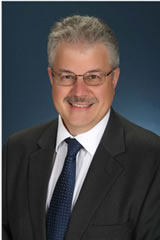 Richard Desrosiers, GZA GeoEnvironmental, Inc. (richard.desrosiers@gza.com)
Richard Desrosiers, GZA GeoEnvironmental, Inc. (richard.desrosiers@gza.com)
Richard Desrosiers is Vice President/Hydrogeologist for GZA GeoEnvironmental, Inc. in Glastonbury, Connecticut. Beginning his environmental career in the mid-1980s, Richard has focused on large complex geologic, hydrogeologic and geochemistry fate & transport problems associated with soil and groundwater contamination. He designed and led site investigations and remediation actions at a site with chlorinated solvents and hexavalent chromium encompassing a one square mile using high resolution site characterization and designing in-situ remediation remedies using chemical oxidation for VOC and biochemical reduction to treat hexavalent chromium and volatile organic compounds. Richard has completed RCRA/CERCLA hazardous waste investigations/closures; implemented in-situ innovative recirculation well technology to capture, treat and reinject remediate groundwater within the same well; identified and developed high yielding groundwater supplies in surficial and bedrock aquifers; completed numerous hydrogeologic evaluations and groundwater models; and has provided depositions, bench and jury expert testimony regarding litigation issues. Most recently, Richard leads GZA's PFAS initiative and has participated on CT PFAS Task Force Committees. Since 2015, Richard has been an active member on the Interstate Technology & Regulatory Council (ITRC) "Characterization and Remediation in Fractured Rock", "Optimization of In-Situ Remediation and Injection Strategies" and "Per- and Polyfluoroalkyl Substances (PFAS)" teams. Richard earned a bachelor's degree in Geology from Northeastern University in Boston, Massachusetts in 1982. He is a Licensed Environmental Professional in Connecticut and a licensed Professional Geologist in New Hampshire and Tennessee.
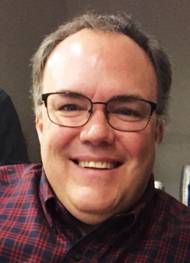 Kristopher McCandless, Virginia Department of Environmental Quality (kristopher.mccandless@deq.virginia.gov)
Kristopher McCandless, Virginia Department of Environmental Quality (kristopher.mccandless@deq.virginia.gov)
Kristopher (Kris) McCandless has worked for the Virginia Department of Environmental Quality (DEQ) in Woodbridge, Virginia since 2015. As an Environmental Geologist in the petroleum storage tank remediation division, he manages the characterization and remediation of numerous leaking petroleum storage tank sites, as well as assists the Land Protection Program with chlorinated solvent sites. Kris has spent most of his career as a project manager and hydrogeologist in the environmental consulting field. In the past two decades, his projects were focused on investigating and managing petroleum and chlorinated solvent sites in the Mid-Atlantic Piedmont states. Kris spearheaded investigations for Alternate Water Supplies for the DEQ Petroleum Program for State Lead sites as a contractor for DEQ, including locating new supply well locations, tracking groundwater flow through fractured media, performing packer testing to sample and isolate impacted zones within a supply well, performing pump tests in fractured rock, and assessing bedrock sites for remediation of chlorinated solvents. While reaping the benefits of many ITRC webinars during his consulting career, Kris joined the Fractured Bedrock team soon after employment with DEQ. Kris is actively engaged as a chapter lead for the ITRC Optimization of In situ Remediation team beginning in 2018. Kris earned his Bachelor of Science degree in Geology from George Mason University in 1988 in Fairfax, Virginia and is a Certified Professional Geologist (CPG) in Virginia.
 Suzanne O'Hara, Geosyntec Consultants (sohara@Geosyntec.com)
Suzanne O'Hara, Geosyntec Consultants (sohara@Geosyntec.com)
Suzanne O'Hara is a senior contaminant hydrogeologist with Geosyntec Consultants based in Ontario Canada. She has over 20 years of field and project management experience focusing on remediation of groundwater and soil containing recalcitrant compounds using innovative and more conventional technologies. She has directed, managed, or provided technical support for multiple projects ranging from overall strategy development, site investigation, remedial design, costing and implementation, contaminant fate and transport, and conceptual site model (CSM) development. Her technical experience involves dense non-aqueous phase (DNAPL) fate and transport in fractured media and the design, implementation and interpretation of innovative in situ remediation technologies for complex contaminated sites. Suzanne's remediation technology experience includes enhanced in situ bioremediation (EISB), in situ chemical oxidization (ISCO) and reduction (ISCR), Self-sustaining Treatment for Active Remediation (STAR) thermal remediation, passive treatment using zero-valent iron barriers, and reductive dechlorination using emulsified zerovalent iron (EZVI) for DNAPLs. Suzanne has been involved in ITRC since 2017 as a team member of the Optimizing Injection Strategies and In Situ Remediation Performance team. Suzanne earned a bachelor's degree in Earth Science (geology) from the University of Waterloo, Ontario, in 1994 and a master's in Hydrogeology from the University of Waterloo, Ontario, in 1997. Suzanne is a Professional Geoscientist in Ontario and a Professional Geologist in New York.
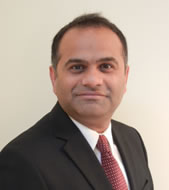 Jaydeep Parikh, P.E., ERM (jaydeep.parikh@erm.com)
Jaydeep Parikh, P.E., ERM (jaydeep.parikh@erm.com)
Jaydeep Parikh is a Partner with Environmental Resources Management (ERM) based in the Philadelphia area, Pennsylvania office. Since the late 1990s, Jaydeep has built his expertise in global environmental consulting with his core expertise being in remediation of contaminated sites. Jaydeep advises clients with site and portfolio management strategy aligned with client's business objectives, and leads conceptual to full-scale design, remedy implementation, and cost-effective management of environmental liabilities including optimization of existing remedies. Jaydeep has conducted and led numerous feasibility studies, bench and pilot testing of various in situ remediation technologies, remedial alternatives evaluation, and full-scale remedy design and implementation projects. A fun fact: working on an initial patent application project (led by others), Jaydeep was the first person ever to batch and inject sodium persulfate solution in subsurface for ISCO remediation more than two decades ago. Jaydeep earned a bachelor's degree in Environmental Engineering from L.D. College of Engineering in India in 1994; and a master's degree in Civil and Environmental Engineering from University of Massachusetts, Lowell in 1998. Jaydeep is a licensed Professional Engineer (P.E.) in the states of Illinois, New Jersey and New York.
 Elizabeth Rhine, Bhate (erhine@bhate.com)
Elizabeth Rhine, Bhate (erhine@bhate.com)
Elizabeth Rhine is a remediation biologist with Bhate Environmental Associates in Birmingham, Alabama. She has more than 25 years of professional experience focused on the characterization and remediation of impacted sites in the chemical, oil and gas, and transportation sectors. Since coming to Bhate, Elizabeth has been involved with remediation and optimization of federal sites, primarily for the US Army Corps of Engineers. She is adept at developing creative and cost-effective remediation strategies for clients to meet the objectives of project stakeholders including responsible parties, regulatory agencies, potential developers, and the public. Her work has focused primarily in groundwater remediation of sites under the Comprehensive Environmental Response, Compensation, and Liability Act (CERCLA) and Resource Conservation and Recovery Act (RCRA), developing site conceptual models, evaluating site conditions for in situ groundwater remedies, indoor air quality, regulatory compliance, environmental liability valuations, transactional due diligence, and brownfield redevelopment. Elizabeth is the author or co-author of more than a dozen peer-reviewed technical papers and has presented at a number of conferences and universities. Elizabeth earned a bachelor's degree in biology from Furman University in Greenville, South Carolina in 1989 and a master's degree in business administration with an emphasis in data management in 1998.
 Chapman Ross, P.E., FRx, Inc. (cross@frx-inc.com or 617-821-0686)
Chapman Ross, P.E., FRx, Inc. (cross@frx-inc.com or 617-821-0686)
Chapman Ross is the Director of Technology for FRx, Inc. and is based in Boston, Massachusetts. He has over 20 years of environmental industry experience focused on in situ remediation design and innovative technology development. Chapman is a technical expert in injection methods for in situ treatment, specializing in amendment delivery methods for low-permeability formations (e.g., hydraulic fracturing, direct injection, and high-pressure jetting). He has led the design of remediation projects utilizing chemical oxidation (e.g., permanganate, persulfate, peroxide, and ozone), chemical reduction with zero-valent iron, and enhanced bioremediation. Chapman earned a bachelor's degree in civil engineering and a master's degree in environmental engineering and science, both from Clemson University in South Carolina. Chapman is a certified Professional Engineer (Environmental) in Massachusetts.
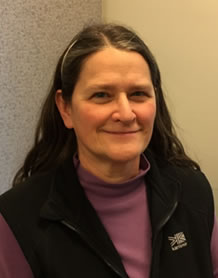 Janet Waldon, Massachusetts Department of Environmental Protection (janet.waldron@state.ma.us)
Janet Waldon, Massachusetts Department of Environmental Protection (janet.waldron@state.ma.us)
Janet Waldron is a Superfund Site Project Manager for the Massachusetts Department of Environmental Protection. Janet has been with the Department over 30 years, most of which has been in the Superfund program. Janet manages DEP contractors' activities at sites for which the Department has assumed responsibility from EPA, including reviewing reports generated by PRP or EPA contractors. She is Co-Chair of the Association of State and Territorial Solid Waste Management Officials (ASTSWMO) Post-Construction Focus group. Janet has made presentations about various remediation efforts at some of the sites she has managed under the Superfund program at Northeast Waste Management Officials' Association (NEWMOA) workshops. Janet earned her bachelor's degree in Geography from Framingham State University in 1982 and a Master's in Energy and Environmental Analysis from Boston University's Center for Energy and Environmental Studies in 1985.
 Amy Wilson, TRC (awilson@trcsolutions.com)
Amy Wilson, TRC (awilson@trcsolutions.com)
Amy Wilson is a Principal Engineer and Technical Director at TRC in Concord, California. Her technical focus is on contaminant hydrogeology, groundwater modeling, water quality, and remediation, with an emphasis on developing long-term solutions for large-scale, complex sites. Amy has co-developed and presented engineering and continuing legal education workshops on a variety of topics for the environmental industry. She has been active in the ITRC since 2018, serving on the Optimizing Injection Strategies and In Situ Remediation Performance team. Amy holds a PhD in Civil/Environmental Engineering from the University of California at Berkeley and is a registered PE in California.
Moderator:
ITRC Training Program (itrc@itrcweb.org)
Webinar Slides and References:
Additional Resources:
- Optimizing Injection Strategies and In situ Remediation Performance (OIS-ISRP-1)
- ITRC Optimizing Injection Strategies and In situ Remediation Performance team page
- ITRC Improving Environmental Site Remediation Through Performance-Based Environmental Management (RPO-7) Nov-07
- ITRC Remediation Process Optimization
- ITRC Performance-Based Management (RPO-6) Mar-06
- ITRC Geospatial Analysis for Optimization (GRO-1) Nov-16
- Integrated DNAPL Site Strategy (ITRC 2011c)
Thank you for participating in our webinar. We would like to receive any feedback you might have that would make this service more valuable.
Help & FAQs
- Frequently Asked Questions
- Content Questions?
Call ITRC Training Program at 202-266-4932 or itrc@itrcweb.org - Technical Problems?
Leave us a comment - Cancel Your Registration
- My Participation Records
- CEU Credits and PDHs
Zoom Resources
Before Webinar Day
This seminar will be delivered through Zoom. Participants are encouraged to update to the latest version of the Zoom application for the best experience.
If you are unable to install the Zoom application, most functions will be available if you join just using a modern web browser such as Chrome, Edge or Firefox. We strongly encourage you to run the Zoom Meeting Test prior to attending this webinar. Technical support on the day of the webinar will be very limited and subject to significant delays.
Backup Conference Call
If you cannot participate using online audio, you may join the optional call in line. After checking in for the live event using the instructions listed below, you will see several options to participate. Please click the links in option 4 to follow along by phone and obtain the call in number. If you cannot access the phone number, you may request the call in line from the event moderator in the Q&A or send an email to Jean Balent at balent.jean@epa.gov
Click on "Join Webinar" at the top of this screen, enter your exact first and last name as you registered and enter the number of people attending at your location (including yourself). You should then be taken to the Zoom meeting room. Join with Zoom Application: For those joining with the Zoom application, you may be prompted to sign with a zoom account or join as a guest without signing in.
If joining as a guest, you will be prompted to enter your name and email address. Remember your name, image, video or voice may be visible to others in the live event. When done, click "Join" When it is time for the live event to start, the meeting host will admit you to the live Zoom meeting. Join via web browser (without the Zoom Application): For those joining with a web browser, you may close any pop ups prompting you to download the Zoom app. The next window will allow you to enter your name (first name and last name) and check the box that you are not a robot. Click the blue join button. You may also be asked to provide your email address before joining the room. Remember your name, image, video or voice may be visible to others in the live event. When done, click "Join" When it is time for the live event to start, the meeting host will admit you to the live Zoom meeting. You may need to periodically refresh the browser window to confirm if the host has admitted you. The presenters will control what slide you are viewing. You may submit questions online for the instructors to answer during the webinar by typing in the "Q&A" area. It is not necessary to wait until the question and answer periods to submit questions. At the end of the webinar you will be guided to our feedback form and links to additional resources, including the complete presentation. These links will remain active after the webinar. Provided for your convenience. Importing or accepting the invitation within this iCalendar file is not required, and declining the invitation does not cancel your registration. For additional information on iCalendar, please see our
iCalendar Help It is EPA's policy to make reasonable accommodation to persons with disabilities wishing to participate in the agency's programs and activities, pursuant to the Rehabilitation Act of 1973, 29 U.S.C. 791. Any request for accommodation should be made to at or , preferably one week or more in advance of the seminar, so that EPA will have sufficient time to process the request. EPA would welcome specific recommendations from requestors specifying the nature or type of accommodation needed. EPA welcomes specific recommendations from requestors specifying the nature or type of accommodation needed. Please note that CLU-IN provides both alternate phone call-in options and closed captioning for all webinars, and requests for these specific accommodations are not necessary.
Webinar Day, Checking In

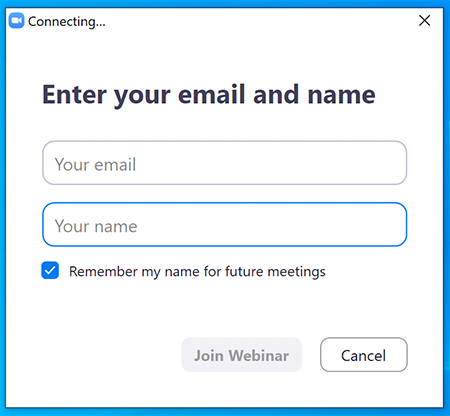
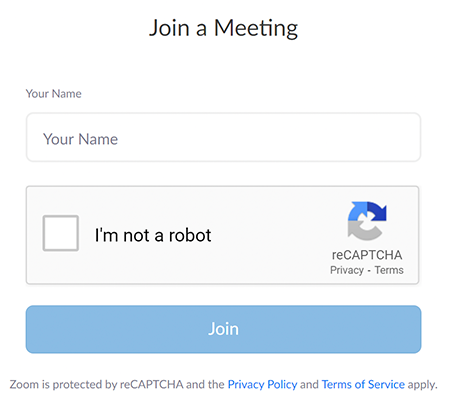
Moving Through Slides
Feedback & Links to Additional Resources
iCalendar File
Rehabilitation Act Notice for Reasonable Accommodation
Rehabilitation Act Notice for Reasonable Accommodation
It is EPA's policy to make reasonable accommodation to persons with disabilities wishing to participate in the agency's programs and activities, pursuant to the Rehabilitation Act of 1973, 29 U.S.C. 791. Any request for accommodation should be made to at or , preferably one week or more in advance of the webinar, so that EPA will have sufficient time to process the request. EPA would welcome specific recommendations from requestors specifying the nature or type of accommodation needed. EPA welcomes specific recommendations from requestors specifying the nature or type of accommodation needed. Please note that CLU-IN provides both alternate phone call-in options and closed captioning for all webinars, and requests for these specific accommodations are not necessary.
Webinar Recording
By participating in this CLU-IN webinar, you automatically agree to authorize recording of audio and visual content presented during this live event and consent to subsequent use of this recording in the public domain by the U.S. Environmental Protection Agency. This recording may include questions, comments and poll responses provided by you during the live event in addition to your name, voice, image or likeness. This recording will be made available after the conclusion of the live event as part of the CLU-IN webinar archives, and will remain available indefinitely. If you do not wish to consent to the recording, please do not join the live event, and contact Jean Balent at 202-566-0832 or balent.jean@epa.gov to discuss your concerns.
Content Disclaimer
This webinar is intended solely to provide information to the public. The views and opinions expressed as part of this webinar do not necessarily state or reflect those of the U.S. Environmental Protection Agency. It is not intended, nor can it be relied upon, to create any rights enforceable by any party in litigation with the United States, or to endorse the use of products or services provided by specific vendors. With respect to this webinar, neither the United States Government nor any of their employees, makes any warranty, express or implied, including the warranties of merchantability and fitness for a particular purpose, or assumes any legal liability or responsibility for the accuracy, completeness, or usefulness of any information, apparatus, product, or process disclosed, or represents that its use would not infringe privately owned rights.

